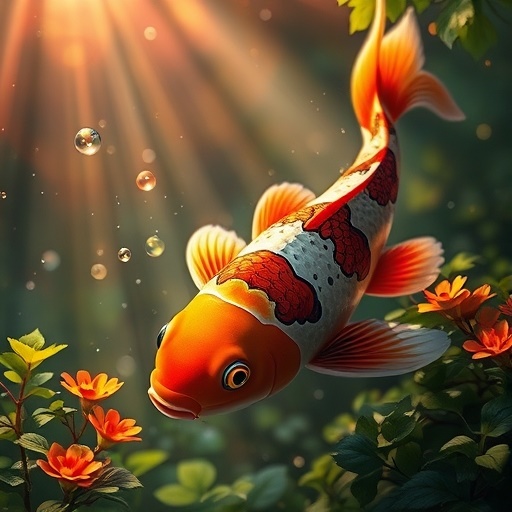Koi fish are not just vibrant decorations for ponds; they are living canvases of nature’s artistry. Their colors, patterns, and shine captivate enthusiasts worldwide. Let’s dive into the fascinating secrets behind their dazzling hues.
1. Genetics: The Foundation of Koi Colors
The vibrant colors of koi fish are largely determined by their genetic makeup. Just like in humans, koi inherit traits from their parents, including color patterns and scale quality. Breeders carefully select koi with desirable traits to produce offspring with specific patterns, such as Kohaku (white with red patches) or Showa (black, white, and red).
The pigments responsible for their colors are embedded in special skin cells called chromatophores. These cells produce three primary pigments: melanin (black), xanthophores (yellow), and erythrophores (red). The interaction of these pigments, along with light reflection from guanine crystals in their scales, creates the stunning variety of colors we admire.
2. Environmental Factors and Their Impact
While genetics play a vital role, environmental factors significantly influence a koi’s coloration. Water quality is a primary factor; clear, clean water helps maintain vibrant hues, whereas poor water conditions may dull their colors. The temperature of the water also affects koi pigmentation. Warm water tends to enhance their colors, making them appear more vivid, while cold water can cause colors to fade.
Another critical factor is diet. Koi fish require a diet rich in carotenoids, which are natural pigments found in foods like shrimp, spirulina, and certain vegetables. These nutrients help amplify their red and yellow hues, ensuring their colors remain bright and eye-catching. Additionally, stress, whether from overcrowding, predators, or sudden changes in their environment, can cause koi to lose their coloration over time.
3. Aging and the Evolution of Patterns
Koi fish undergo significant changes in coloration and patterns as they age. Juvenile koi may display more intense colors, which can fade or shift as they mature. This transformation is a natural part of their growth process and varies between individual fish.
Interestingly, some koi develop deeper, more vibrant colors with age, particularly if they are kept in optimal conditions. This phenomenon is especially common in koi varieties like Kohaku, where the red patches, known as hi, become more prominent and defined over time. Conversely, older koi may experience a loss of pigmentation, leading to paler appearances.
The colors of koi fish are a mesmerizing blend of genetics, environment, and time. Each koi is unique, showcasing the interplay of natural artistry and human care. By understanding these factors, koi enthusiasts can better appreciate and maintain the beauty of these aquatic gems. Whether you’re a hobbyist or a seasoned breeder, unlocking the secrets behind koi coloration deepens the bond with these captivating creatures.

